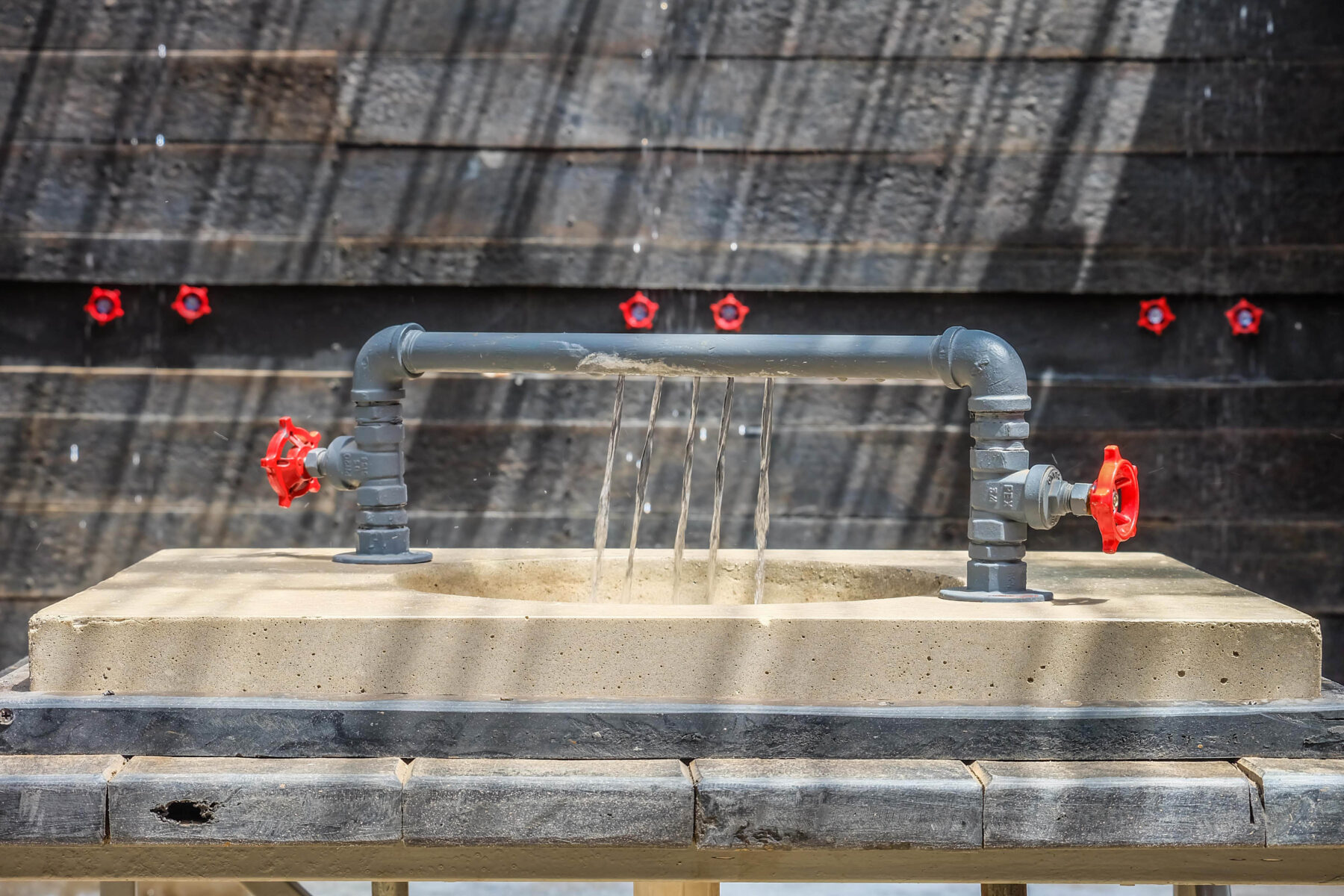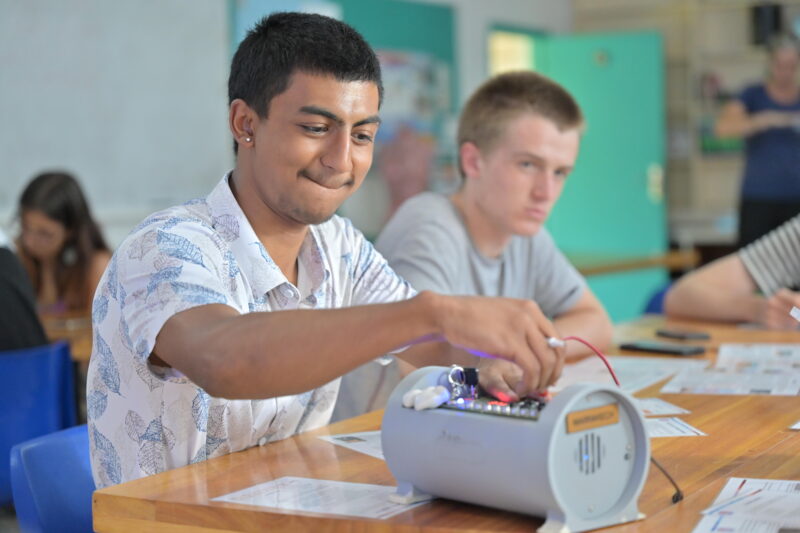
Recycled Changing Rooms
Details
Two changing room buildings that have been manufactured from recycled materials and have a low demand on energy
With a view on the impact to the environment firmly in the forefront of everyone’s mind, the School Management commissioned the services of Alexis Cronin, a designer whose track record in the design of ‘green architecture’ was amongst the best in Tanzania. Alexis also directs Dunia Designs, a company whose reputation has been forged on their design of furniture made from recycled soft plastic waste. The selection committee, which included teachers, parents and students chose Alexis’ most ambitious design and today the computerised renditions that were first viewed in January 2017 are a reality. An estimated 3600 sackfuls of discarded plastic bags are contained in the walls of the changing rooms. The recycled plastic cladding or ‘greenwood’ is virtually indestructible, requires no painting and is resistant to the harshest conditions the elements can throw at it. The greenwood is screwed to a modest light steel frame. Blockwork has been kept to a minimum and therefore the overall impact to the environment in terms of concrete and cement has been kept to a minimum. Neither changing room receives mains power. For most of the day and early evening, the natural daylight which permeates through the clear Perspex roofing sheets is sufficient to provide light to the rooms. At night, low wattage bulbs are activated by motion sensors and these are solar powered. The water in the showers are heated by the sun. Even the use of expensive pre-fabricated showerheads and taps has been averted through the use of drilled pipework.
For more info, contact: philbowen@uwcea.org


